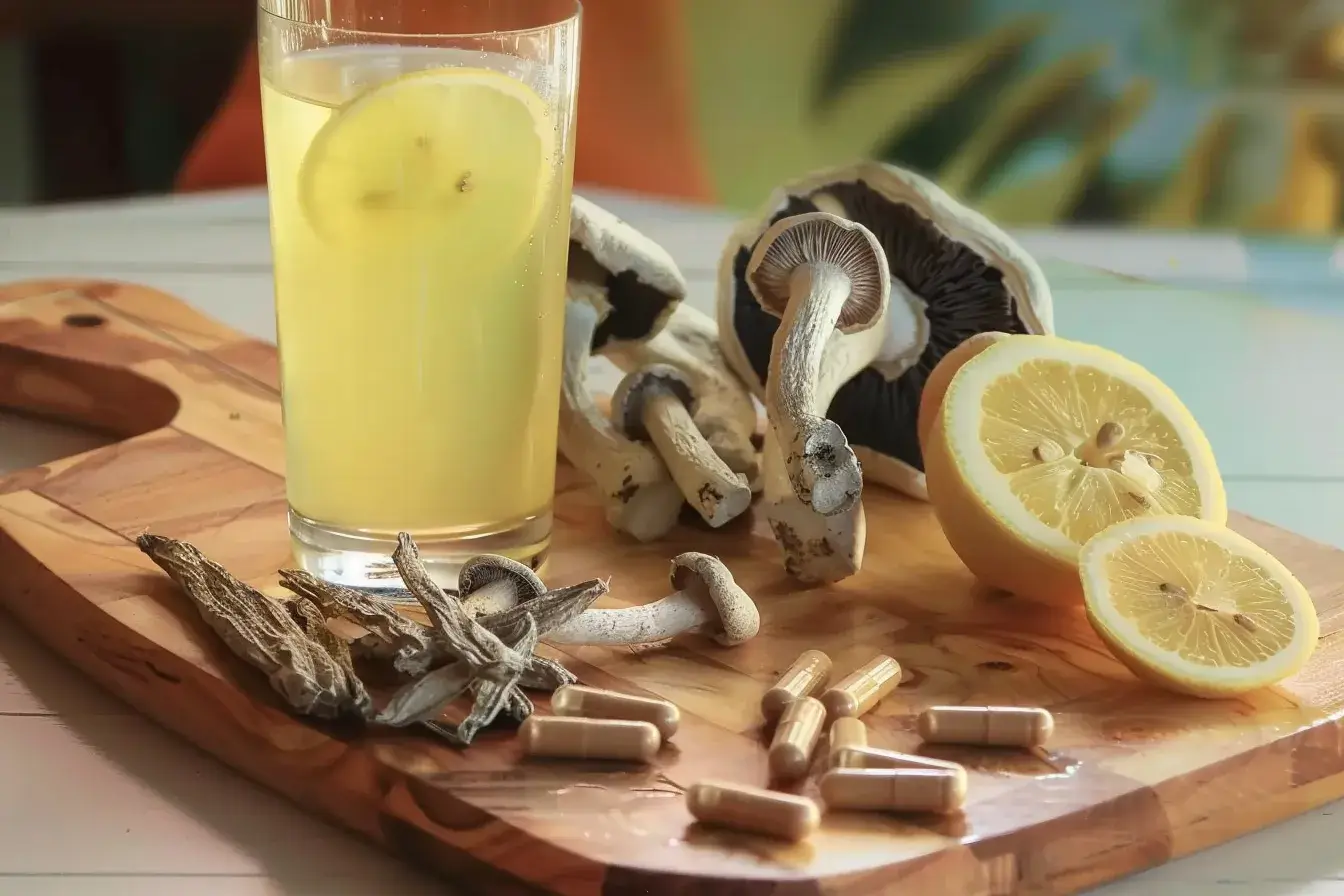Mushrooms have captivated human imagination and played diverse roles in health and culture for millennia. Various civilizations have used these versatile organisms for culinary, medicinal, and spiritual purposes. From ancient Egyptian hieroglyphs depicting mushrooms as “plants of immortality” to their sacred use in indigenous ceremonies through the present day, mushrooms are woven into the fabric of human history. In traditional Chinese medicine, fungi like reishi and shiitake are celebrated for their healing properties, while in modern wellness, functional mushrooms are lauded for their potential to enhance immunity, cognitive function, and overall vitality. Functional mushrooms offer health benefits beyond basic nutrition. They contain bioactive compounds, such as polysaccharides, beta-glucans, triterpenoids, and antioxidants, contributing to their therapeutic properties. (1)
While this guide focuses on functional (health-boosting) mushrooms, it is important to note the growing interest in combining functional and psychedelic species such as in psychedelic mushroom capsules or chocolates that also contain other types of fungi for added benefit, underscoring their distinct advantages and uses. As we delve deeper into this world, we uncover historical reverence and contemporary relevance, highlighting their enduring significance in human health and cultural practices.
Functional Mushrooms for Health

Functional mushrooms are increasingly popular as ingredients in daily nutrition and supplements, thanks to their health-promoting properties. Simply put, they serve a beneficial function in our bodies. This group of fungi includes reishi, lion’s mane, chaga, and cordyceps—names you’ve likely heard in wellness circles. Traditionally used in Chinese and Ayurvedic medicine, the Western world is now embracing this ancient knowledge. Their ability to enhance vitality, immunity, and even longevity has sparked growing scientific interest. Research shows that bioactive compounds like beta-glucans and triterpenoids are responsible for supporting cognitive function, reducing inflammation, and boosting the immune system.
There are many ways to consume these functional mushrooms, but double extraction tinctures are one of the most effective. This method extracts both water-soluble and alcohol-soluble compounds, ensuring a full spectrum of active ingredients is absorbed efficiently through the gums, directly into the bloodstream, bypassing digestion.(6)
Lion’s Mane (Hericium erinaceus): Cognitive and Nervous System Support
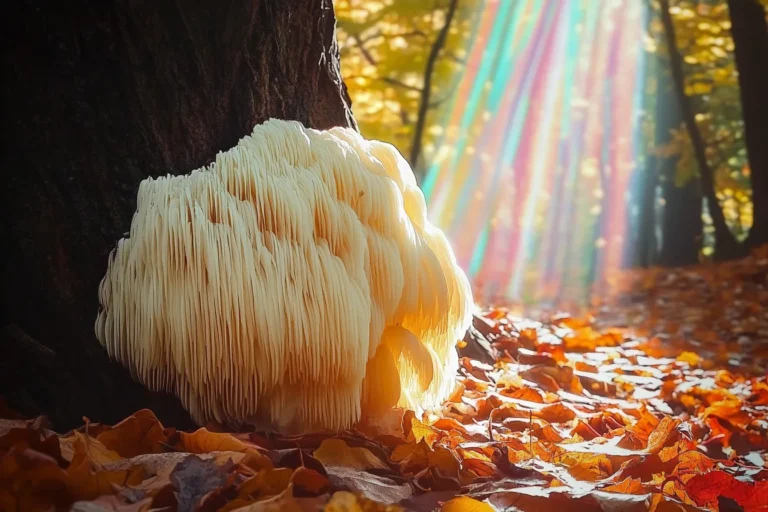
Lion’s Mane (Hericium erinaceus) is a well-known culinary and functional mushroom—and guess where it got its name: With a striking appearance resembling a lion’s mane or a sea anemone, this mushroom thrives in temperate forests, growing on trees across Asia, Europe, and North America. (7)
Keep Up with Uncensored Psychedelic Trends
Join our newsletter at Psychedelics Uncensored.
We respect and protect your privacy. By subscribing your info will be subject to our privacy policy . Unsubscribe easily at any time
Benefits of Lion’s Mane
Over time, studies involving Lion’s Mane have shown that the funky-looking fungi can support multiple systems, including cardiovascular health and mental health. (8)
Brain Health: Lion’s Mane is most prominently known for containing compounds called erinacines and hericenones, which support brain health by promoting nerve growth factor (NGF), the growth of brain cells, and improving cognitive function. Furthermore, human and animal studies have demonstrated powerful anti-neuroinflammatory and neuroprotective abilities. (9, 10, 11, 12, 13, 14, 15, 16)
Immunity: Lion’s Mane also owes its health benefits to polysaccharides (i.e. beta-glucans), complex carbohydrates composed of long chains of sugar molecules. These compounds are anti-inflammatory and immune-boosting, helping to fend off infections and promote better digestive health and a thriving community of good gut bacteria. (17)
Lion’s Mane can reduce oxidative stress in neural cells, suggesting promising therapeutic applications for neurodegenerative diseases like Alzheimer’s and Parkinson’s. With the latest groundbreaking research on the gut-brain axis, Lion’s Mane might just be the magical mushroom you should add to your daily diet. (18, 19, 20, 21, 22)
Lion’s Mane Dosage
Lion’s Mane can be consumed by culinary preparation, in a tincture, in free powder or in capsules in daily doses ranging from 500-3000 mg. There are also beverage brands and coffee alternatives such as MUDWTR, that pack a nice amount of Lion’s Mane to support your mental focus and energy through the day, without the crash. (23, 24, 25)
Despite several studies reporting on this dosing range, the optimal dose remains uncertain. Some individuals prefer to take Lion’s Mane once at the beginning of the day, while others divide their intake into 2-3 doses, depending on the length of their day. Anecdotally, a daily intake of at least 1000 mg of Lion’s Mane is optimal. Specifically, taking at least twice this amount, once in the morning and another time in the afternoon, may be more effective than a single dose, ensuring sustained benefits throughout the day. (26)
Keep Up with Psychedelic Trends
Get uncensored psychedelic news, events, and updates. Join Psychedelics Uncensored!
We respect and protect your privacy. By subscribing your info will be subject to our privacy policy . Unsubscribe easily at any time
Side Effects of Lion’s Mane
Gastrointestinal: You might experience some GI issues, like mild discomfort, nausea, or diarrhea.
Allergic Reactions: Some individuals, particularly with a history of allergies and asthma, may have an allergic reaction. (27)
Interactions with Medications: Lion’s Mane may interact with diabetes medications by potentially lowering blood glucose levels excessively. It may also be contraindicated with anticoagulant or antiplatelet drugs by increasing the risk of bleeding or bruising, as Lion Mane can also have an antiplatelet, blood thinning effect. Its anti-inflammatory properties are due to this blood thinning effect. (28)
Though there are no well-documented clinical cases reports, individuals on these medications should consult with their healthcare provider before using Lion’s Mane.
Chaga (Inonotus obliquus): Immunity and Antioxidant Powerhouse
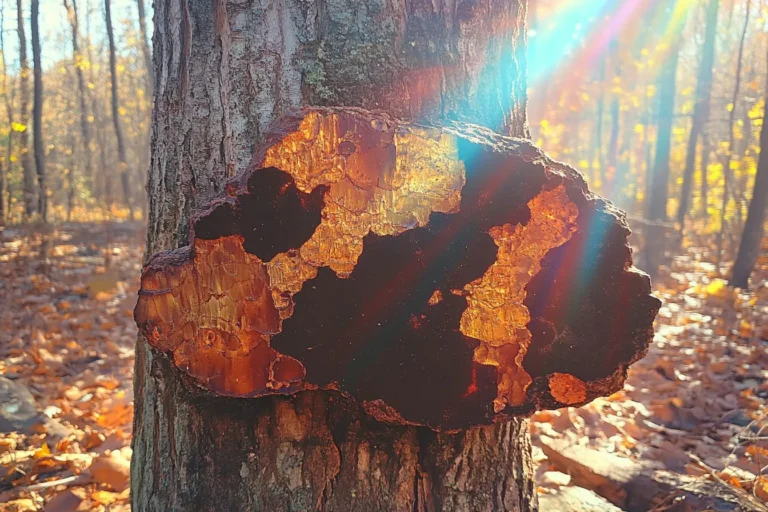
Chaga (Inonotus obliquus) is a parasitic fungus found on birch trees in cold climates such as Siberia, Russia, and Northern Canada. Known for its impressive antioxidant properties, Chaga is not a mushroom and is often called a canker, a hardened mass resulting from a parasitic fungus that interacts with the tissues of a birch tree rather than being a typical fungal fruiting body. It has been used in traditional medicine for centuries and is renowned for its stress-reducing and immune-modulating effects. It contains various bioactive compounds, including polysaccharides, betulinic acid, and polyphenols, contributing to its therapeutic properties. Studies suggest that Chaga can enhance the immune system by promoting the production of cytokines, which help regulate the immune response. Additionally, its adaptogenic properties help the body resist stress and maintain homeostasis. (29, 30, 31)
Benefits of Chaga
Chaga is being researched for several uses, including blood sugar and cholesterol stabilization, muscle fatigue, skin health, and brain function. (32)
Antioxidant: Chaga has powerful antioxidant activity—higher than that of blueberries and açai berries. It can prevent cellular damage and reduce the risk of chronic diseases, and it is being researched in the field of oncology. (33, 34)
Immunity: Chaga supports the immune system by boosting the production of beneficial cytokines (inflammatory cells), helping the body fight off infections and diseases. (35, 36, 37)
Anti-inflammatory: Interestingly, Chaga also has anti-inflammatory properties that can help reduce inflammation in the body when needed, which is helpful with pain that can accompany various chronic conditions. (38, 39, 40)
Chaga Dosage
The recommended dosage of Chaga can vary depending on the form. For Chaga powder, a typical dose is 1-2 teaspoons per day, while Chaga extract is often taken at 200-500 mg per day. It’s best to follow specific product recommendations and consult with a healthcare provider for personalized advice. (41)
Chaga Side Effects
Interactions with medications: Chaga is generally considered safe, but can interact with certain medications, particularly those affecting blood sugar and blood clotting. Similarly to Lion’s Mane, Chaga can also lower blood sugar and have a blood thinning effect leading to anti inflammation. Combining Chaga with medications that also lower blood sugar and thin the blood can potentiate effects and lead to adverse events. Potential side effects can include bruising, excessive bleeding, low blood sugar, digestive upset and allergic reactions. Always consult with a healthcare provider before starting any new supplement, especially if you take medication. (42)
Reishi (Ganoderma lucidum): The Mushroom of Immortality
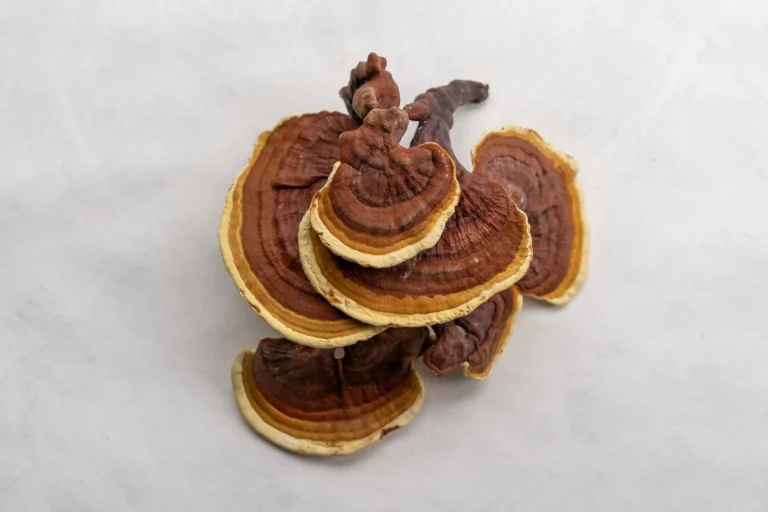
Reishi (Ganoderma lucidum), referred to as the “Mushroom of Immortality,” has been revered in traditional Chinese medicine for over 2,000 years. This prestigious title hints at its wide array of health benefits and its reputation for promoting longevity and vitality. (43, 44)
Reishi is known for enhancing energy levels and improving athletic performance. Its bioactive compounds, including polysaccharides and triterpenoids, help reduce fatigue and boost stamina by supporting the body’s oxygen utilization and energy production processes. Athletes use Reishi to improve endurance and recovery times. Modern studies support its role in promoting longevity by enhancing cellular health and reducing oxidative stress. (45, 46, 47, 48)
Benefits of Reishi
Immunity: Reishi enhances the immune system by increasing the activity of natural killer cells, which help the body combat infections and cancer. (49)
Respiratory function: It also helps reduce inflammation and may support lung and respiratory health. In a mouse study, reishi promoted a healthy inflammatory response, reducing airway sensitivity. If this effect is observed in humans, reishi could potentially facilitate easier breathing. Traditionally, reishi has been used in Chinese medicine to treat bronchitis, a chronic lung condition that affects breathing. (50, 51, 52)
Stress and sleep: Reishi mushrooms help alleviate occasional stress and can be used as a supplement to promote restful sleep. (53)
Reishi Dosage
Reishi is typically powdered, and the recommended dosage is 1.5 to 9 grams per day, depending on the specific product and individual health needs. Reishi extracts are also popular, with typical doses ranging from 200 to 500 mg per day. (54, 55)
Reishi Side Effects
Reishi is generally considered safe, but some individuals may experience side effects such as dry mouth, dizziness, or digestive upset. Pregnant women might want to avoid Reishi for lack of clinical research within that population. It can also interact with blood-thinning medications, so it’s essential to consult a healthcare provider before starting supplementation. A case study has also shown that Reishi and alcohol do not mix and could lead to liver toxicity. (55)
Cordyceps (Cordyceps sinensis): Energy and Athletic Performance
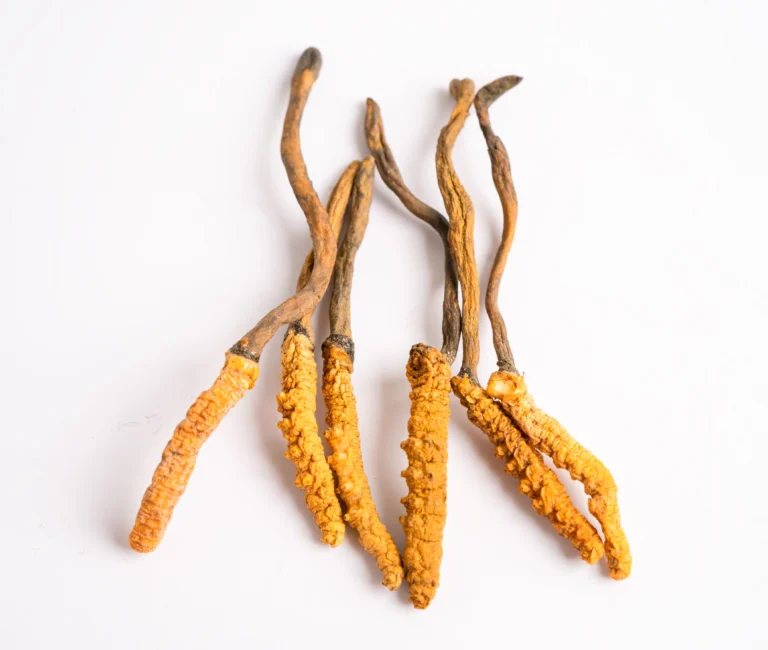
Cordyceps (Cordyceps sinensis) is a unique parasitic fungus that grows on the larvae of insects, predominantly found in the high-altitude regions of China, including Tibet, where it is known as “Tibetan Gold” due to its rarity and valuable health benefits. It has been used in traditional Chinese medicine for centuries, particularly for enhancing energy and athletic performance. You may find Cordyceps militaris more easily in supplement and grocery stores. These are the same mushroom; however, they are not grown on the larvae of insects. You may also find a farm grown sinensis, also grown on larvae, but at lower altitudes. (56)
Cordyceps play a significant role in supporting immune health by stimulating the production of immune cells, such as natural killer cells and macrophages, which help protect the body against infections and diseases. Additionally, some studies suggest that Cordyceps may have potential benefits in cancer treatment by inhibiting the growth of cancer cells and enhancing the efficacy of certain cancer treatments. (57, 58)
Benefits of Cordyceps
Energy and stamina: Cordyceps is known to improve the body’s production of ATP (adenosine triphosphate), which is essential for delivering energy to muscles and enhancing exercise performance. Try consuming Cordyceps as part of a “pre-exercise” routine. A human study confirmed Cordyceps’ benefits in these areas.
Animal studies further reveal that polysaccharides in Cordyceps can significantly reduce fatigue and improve exercise performance biomarkers. In one study, rodents that supplemented with Cordyceps militaris for two weeks showed delayed fatigue onset, higher ATP levels, increased antioxidant enzymes, and lower lactic acid levels. This indicates that these rodents could sustain longer and more intense exercise sessions without tiring as quickly. The antioxidants in Cordyceps help fight oxidative stress, potentially slowing down aging. (59, 60, 61, 62, 63)
Respiratory function: Cordyceps may improve respiratory function and increase oxygen uptake, beneficial for conditions like asthma and bronchitis. (64)
Cordyceps Dosage
Cordyceps can be consumed in various forms, including powder, capsules, and extracts. Double-extracted tinctures are particularly noted for their better and more direct absorption. The recommended dosage typically ranges from 1,000 to 3,000 mg daily, depending on the form and specific health goals.
Cordyceps Side Effects
Cordyceps is generally considered safe for most people, but some may experience mild side effects such as digestive upset, dry mouth, or nausea. Additionally, individuals with allergies or asthma should use Cordyceps with caution, as it may exacerbate their symptoms. It is advisable to consult a healthcare provider before starting supplementation, especially for individuals with autoimmune conditions or those taking immunosuppressive drugs. (69)
Turkey Tail (Trametes versicolor): Immune Support and Cancer Research
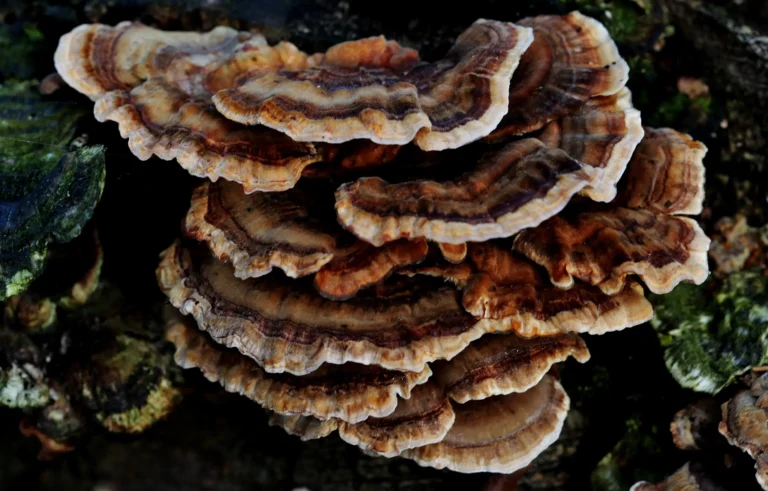
Turkey Tail (Trametes versicolor), named for its colorful, fan-like appearance resembling a wild turkey’s tail, is a versatile mushroom renowned for its health benefits. It has been used in traditional Chinese medicine for centuries and is gaining recognition in modern integrative health practices. (70)
Turkey Tail is particularly noted for its immune-boosting properties. It contains polysaccharopeptides, such as PSP and PSK, which enhance the immune response by increasing the activity of various immune cells, including T-cells and natural killer cells. These properties make it beneficial in supporting immune health and as an adjunct in cancer therapy. In current oncology practice, PSK is used in Japan and China to improve cancer patients’ survival rates and quality of life when used alongside conventional treatments. (71, 72, 73)
Turkey Tail Benefits
Immune Support: Turkey Tail helps stimulate the immune system, enhancing the body’s ability to fight infections and diseases. Animal studies have shown that compounds from turkey tail mushrooms can help increase the number of important immune cells called T cells and B cells. (74, 75, 76, 77, 78, 79, 80)
Gut Health: The polysaccharides act as a prebiotic, promoting the growth of beneficial gut bacteria, which supports overall digestive health.
Additionally, the beta-glucans and triterpenoids in turkey tail mushrooms possess antioxidant properties and help balance inflammatory responses, protecting the gut lining from damage caused by free radicals. Research indicates that turkey tail mushroom extract can improve gut microbiota composition and alleviate symptoms of inflammatory bowel diseases like ulcerative colitis. (81, 82, 83)
Antioxidant: Turkey tail mushrooms contain phenolic compounds, including flavonoids and phenolic acids, which have antioxidant properties. These compounds aid in maintaining cellular health and regulating inflammatory responses in the body. The antioxidants help protect cells from damage and contribute to a balanced immune system, promoting overall well-being. By supporting cellular health and reducing inflammation, turkey tail mushrooms offer significant benefits for maintaining bodily health. (84, 85)
Turkey Tail Dosage
Turkey Tail can be consumed in various forms, including powder, capsules, and extracts. Double-extracted tinctures are particularly noted for their better and more direct absorption. The recommended dosage typically ranges from 1,000 to 3,000 mg per day, depending on the form and specific health goals. (85)
Turkey Tail Side Effects
Turkey Tail is generally considered safe for most people, but some may experience mild side effects such as digestive upset, heartburn, or darkened stools.
Individuals taking immunosuppressants should avoid Turkey Tail mushrooms. It is advisable to consult a healthcare provider before starting supplementation, especially for individuals with autoimmune conditions. Individuals with mushroom allergies should also avoid Turkey Tail due to its immune-boosting properties. Additionally, pregnant or breastfeeding women and people with bleeding disorders should consult a healthcare provider before consuming Turkey Tail. (85)
Bridging the Worlds: The Holistic Benefits of Functional and Psychedelic Mushroom
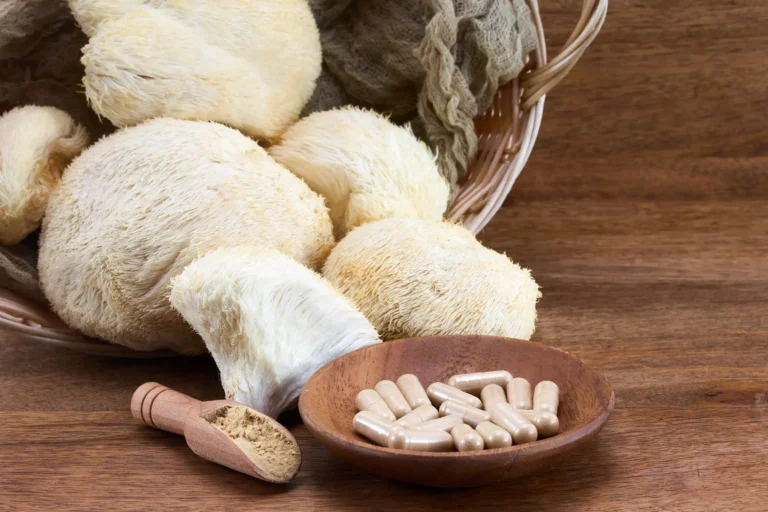
The growing interest in mushrooms as holistic supplements for physical, mental, and emotional well-being reflects a broader shift towards natural and integrative health solutions. Functional mushrooms like Lion’s Mane, Reishi, and Turkey Tail are celebrated for their potent health benefits, including enhanced immune function, cognitive support, and anti-inflammatory properties. They are common medicinal practices in many parts of the world and are now moving out of the alternative category and weaving into common practice in North America. Psychedelic mushrooms, particularly those containing psilocybin, are gaining recognition for their profound effects on mental health, pain relief, and women’s health. (86, 87, 88)
Combining functional and psychedelic mushrooms can harness the complementary benefits of both, creating a synergistic effect that supports overall well-being. For instance, Lion’s Mane mushroom, known for its neuroprotective and cognitive-enhancing properties, can be paired with psilocybin. This is a common blend for microdosing protocol, which involves taking sub-perceptual doses of a psychedelic substance, thus enhancing creativity, focus, and emotional resilience without the hallucinogenic effects typically associated with higher doses. (89)
The neuroregenerative properties of Lion’s Mane may complement the neuroplasticity-promoting effects of psilocybin, potentially amplifying cognitive and emotional benefits. Studies have shown that psilocybin can create new neural connections and enhance brain plasticity. At the same time, Lion’s Mane supports the production of nerve growth factor (NGF), which is essential for maintaining and regenerating neurons. (90)
Additionally, stacking these mushrooms—such as using Lion’s Mane and Cordyceps with microdosed psilocybin before exercise—can enhance physical performance and energy levels, promoting both mental clarity and physical stamina. It is important to remember to keep the dose of psilocybin at a sub perceptual level for your safety. Combining reishi and turkey tail mushrooms, renowned for their potent immune-boosting properties, could offer an enhanced level of immune support, making them a powerful duo.
By learning how to bridge the worlds of functional and psychedelic mushrooms, we can further tap into nature’s wisdom to support our health and overall well-being.
What are Psychedelic Mushrooms?
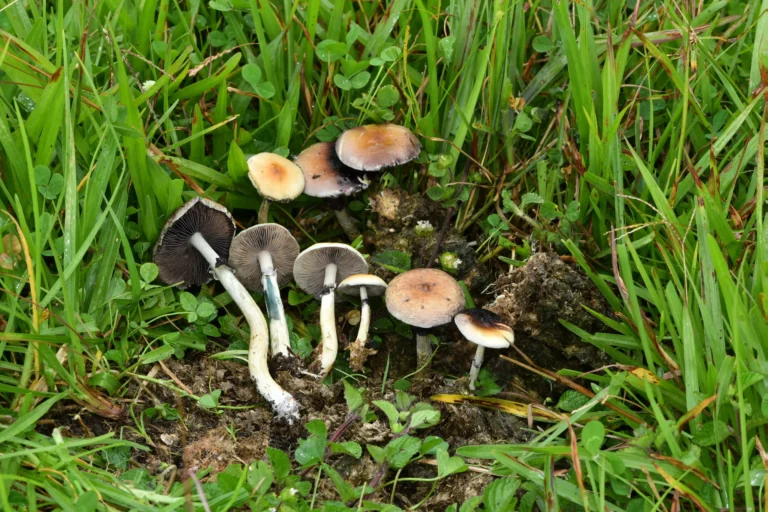
Psychedelic mushrooms, commonly known as magic mushrooms, are a group of fungi that contain psychoactive compounds, primarily psilocybin and psilocin. These compounds interact with serotonin receptors in the brain, leading to altered perceptions, mood, and cognition. Interestingly, psilocybin, when converted to psilocin, mimics serotonin, a mood-stabilizing neurotransmitter, and binds to its receptors like a key fitting into a lock. When ingested, psilocybin is converted into psilocin, which alters the brain’s prefrontal cortex, influencing thought processes, mood regulation, and perception. In spiritual and medicinal practices, these mushrooms have been used for centuries in various cultures, such as the Mazatec of Mexico. In recent years, there has been a resurgence of interest in their potential therapeutic benefits for mental health conditions such as depression, anxiety, and PTSD. (91, 92, 93, 94)
The Therapeutic Potential of Psychedelic Mushrooms

Recent research has highlighted the potential of psilocybin, the active compound in psychedelic mushrooms, for treating a range of mental health conditions. Studies conducted by institutions like Johns Hopkins University and the Imperial College London have shown promising results in using psilocybin-assisted therapy for conditions such as depression, PTSD, and anxiety. Psilocybin promotes neuroplasticity, allowing the brain to form new neural connections, and enhancing cognitive flexibility and emotional resilience. (95)
The Default Mode Network (DMN), is a part of the brain that is active during introspection and mind-wandering, while the task-positive network (TPN), is engaged during focused tasks. Psilocybin disrupts the DMN, enhancing connectivity in the TPN, leading to improved cognitive flexibility, reduced depression symptoms, an increased ability to halt old thought patterns and re-establish new ones, and the potential to lessen feelings of self-doubt and rumination. (96, 97)
One of the critical factors in the therapeutic use of psilocybin is the concept of “set and setting,” which refers to the mental state of the individual (set) and the physical and social environment in which the substance is taken (setting). A supportive environment, which includes a trusted guide, facilitator, and even a social construct (loved ones and friends), paired with proper dosage, is essential to ensure positive therapeutic outcomes and minimize risks. Preparation and integration for an experience are also key and will help guide the setting. Integration is the process of making sense of and incorporating the lessons of psychedelic experiences into daily life. This therapeutic approach, heeding the principles of curating a positive set and setting and putting integration into practice, is useful toward gleaning impactful insights, emotions, and cognitive shifts from a psychedelic session. Whether you take a psychedelic under the guidance of a healthcare professional, in ceremony, by yourself, or recreationally, there is an important opportunity to infuse your experience with education and intention. (98)
Integrating Functional Mushrooms into Wellness Practices
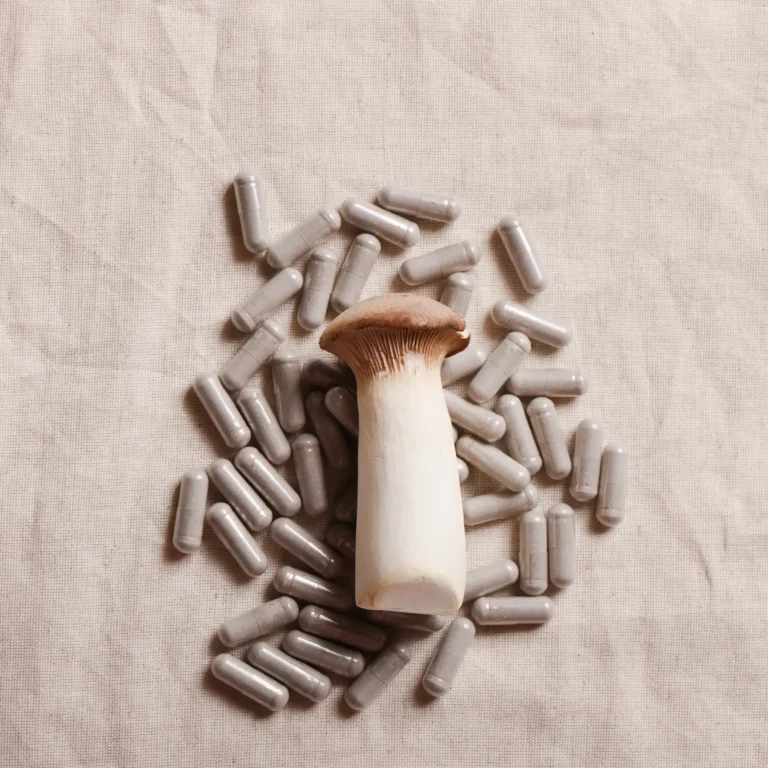
Having read about the varieties of medicinal mushrooms and their benefits for mind and body, it’s time to explore how to incorporate and combine them into daily routines
Microdosing with Functional and Psychedelic Mushrooms
Historical evidence and contemporary research shows us that psilocybin can support our mental health and well-being. Also classified as medicinal, psilocybin mushrooms are most well known for their psychedelic properties. To recap, microdosing psilocybin involves taking sub-perceptual doses of a psychedelic substance to enhance cognitive function, creativity, and emotional resilience without inducing full-blown hallucinations. When combined with functional mushrooms, microdosing can offer synergistic benefits potentiating the benefits of both the psilocybin and other functional mushrooms. (99)
The act of combining functional mushrooms is known as stacking, and a popular method is the Stamets Stack (developed by mycologist Paul Stamets), which combines the use of psilocybin mushrooms with other supplements to enhance cognitive function, neurogenesis, and overall brain health. This stacking method leverages the synergistic effects of multiple substances to potentially amplify their individual benefits. (100, 101)
Components of the Stamets Stack
Stacking of this nature can involve other functional mushrooms and even plants, like kanna, rhodiola, bacopa, and ginkgo biloba. There are many popular combinations for a variety of wellness goals. Functional plants like Kanna, Rhodiola, Bacopa Monnieri, and Ginkgo Biloba are valued for their natural cognitive and mood-enhancing properties. Kanna is known for its ability to alleviate stress and elevate mood, while Rhodiola helps the body adapt to stress, reducing fatigue and boosting mental clarity. Bacopa Monnieri is traditionally used to improve memory and protect the brain from cognitive decline, and Ginkgo Biloba is celebrated for enhancing cognitive functions like memory and focus by improving blood circulation in the brain. Together, these plants are often used in nootropic stacks for their synergistic effects on mental performance and emotional well-being. (102, 103, 104, 105, 106)
Macrodosing and Therapeutic Use
Larger doses of psilocybin (macrodosing) can be administered under professional supervision, in ceremonial settings, or in independent practice to facilitate profound psychological experiences, potentially leading to significant therapeutic breakthroughs. Just like functional stacking, combining macrodosing with functional mushrooms can further enhance the therapeutic process. For instance, Reishi, known for its calming and stress-reducing properties, helps create a more balanced and supportive environment during psilocybin sessions.
While undergoing a macrodose experience in a professional therapeutic setting can lead to growth, positive change, and resilience, many choose to explore differently. A professional setting is not required, although adequate preparation and integration are strongly encouraged. Education and intention are the foundation to a safe and profound experience. Ensuring sufficient support is essential. Individuals can engage with macrodoses of psychedelics through various avenues, such as retreats, indigenous medicine rituals, and medical models involving licensed healthcare providers. The right choice for you is the one that resonates most, provided you entrust yourself to someone who can safely guide you through the experience. If you take medication or are unsure if psilocybin is safe for you, always consult with your healthcare professional and be sure that the medications you’re on already are not contraindicated with the psychedelics you wish to take.
Importance of Responsible Use and Legal Considerations
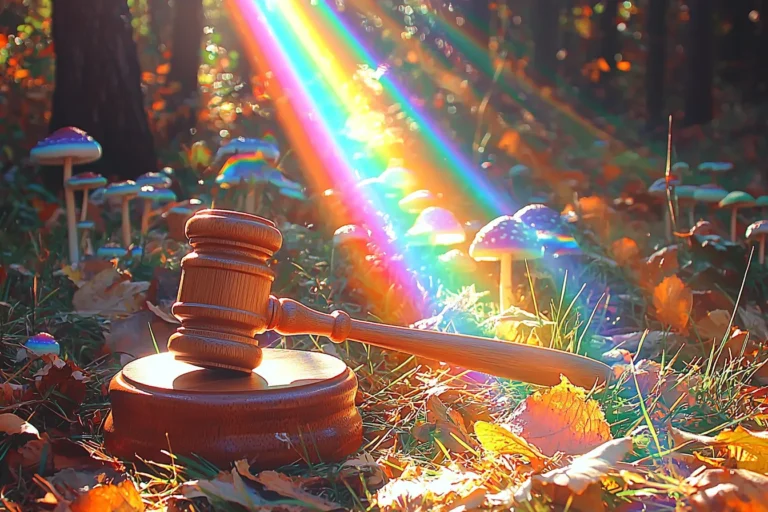
Responsible use of psychedelic and functional mushrooms is crucial. This includes understanding the appropriate dosages, potential interactions and ensuring mushrooms are sourced from reputable suppliers. Legal considerations are also essential. While some areas have decriminalized or legalized psilocybin, it remains illegal in many places. It is crucial to stay informed about local laws and regulations.
Potential for Future Research

The potential benefits of combining functional and psychedelic mushrooms are vast, and ongoing research continues to uncover new applications and therapeutic uses. Future studies may further elucidate how these mushrooms can be used together to enhance mental health, palliative care, support pain, and neurological disorders, women’s health, rehabilitation medicine, athletic performance, and even relationships. As these new therapies become integrated into common medical practice, people may have more options and potentially even solutions where legacy therapies have fallen short. Research from Stanford looking into how ibogaine, a compound derived from the root bark of the Africa iboga shrub, could treat the functional symptoms resulting from a traumatic brain injury within a veteran population is a great example, as current medical practice is limited to symptom management. (107)
States Where Psychedelics Have Been Decriminalized or Legalized
As of 2024, several U.S. states and cities have decriminalized or legalized psychedelics to varying degrees:

Oregon: Oregon was the first state to legalize psilocybin for therapeutic use with the passing of Measure 109 in 2020. The measure allows regulated therapeutic use of psilocybin mushrooms under the supervision of licensed facilitators. Oregon also decriminalized personal possession amounts of all drugs with Measure 110 in 2020.
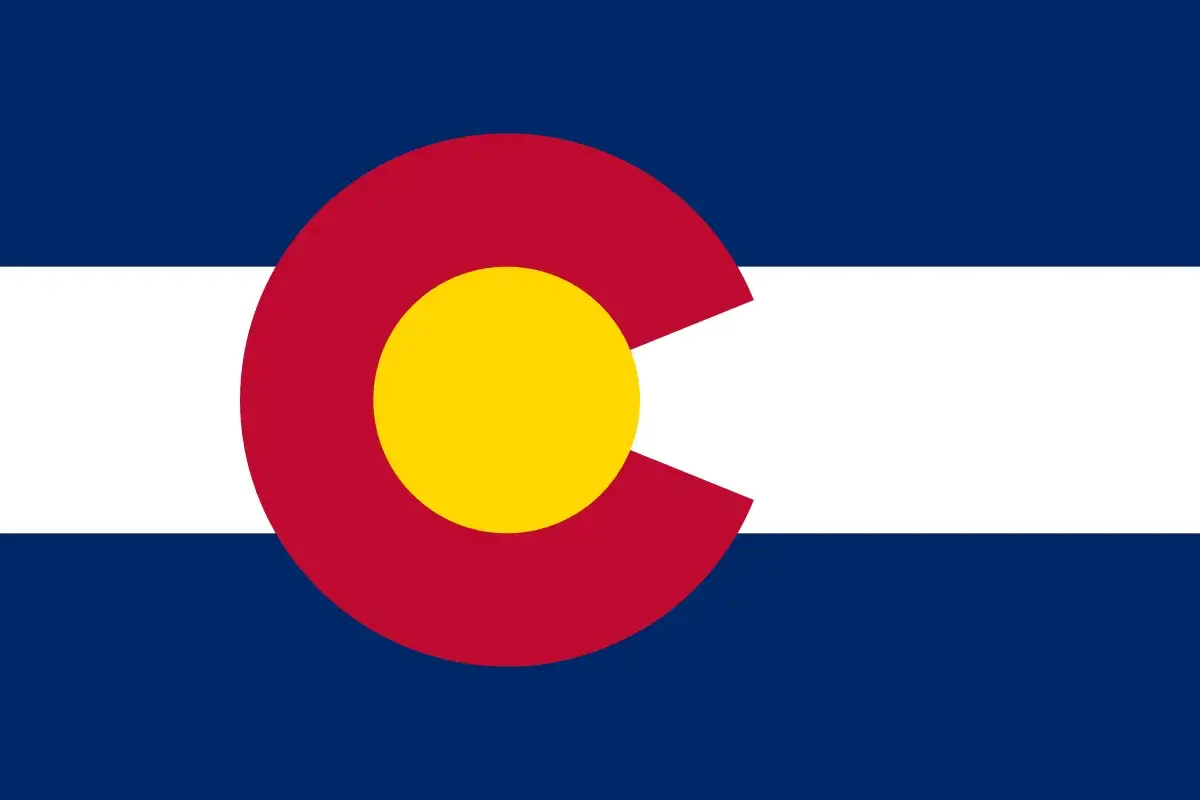
Colorado: In November 2022, Colorado passed Proposition 122, decriminalizing the possession and use of certain psychedelics, including psilocybin and psilocin, for adults 21 and older. The state is also working on setting up regulated access through licensed healing centers by late 2024.

California: Various cities, including Oakland, Santa Cruz, Arcata, Berkeley, and San Francisco, have decriminalized the possession and personal use of certain psychedelics. There have also been various measures in the state legislature to reform psychedelic policy, although none so far have been successful.Washington, D.C.: The Entheogenic Plant and Fungus Policy Act of 2020 decriminalized the use and possession of natural psychedelics.

Massachusetts: Cities like Somerville, Cambridge, Northampton, and Easthampton have decriminalized the possession and use of natural psychedelics.
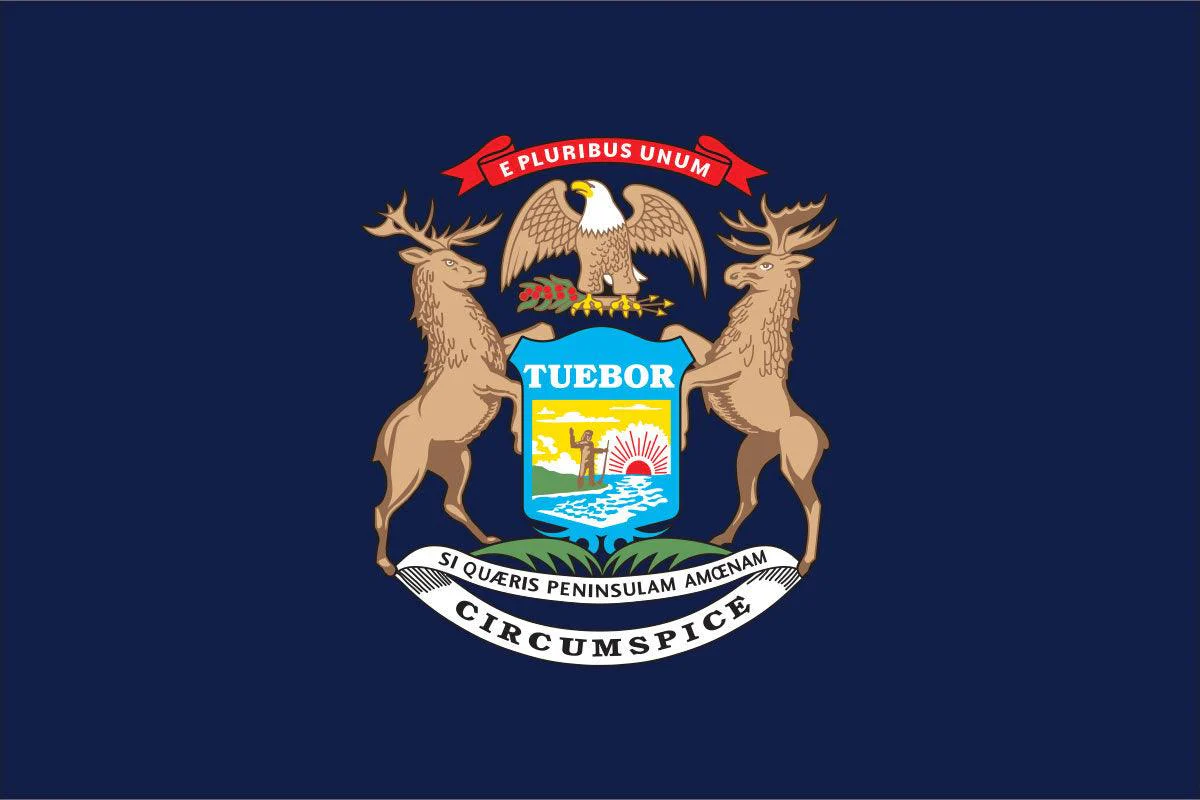
Michigan: Ann Arbor has decriminalized the possession and use of entheogenic plants and fungi. Additionally, Detroit and other cities have passed similar measures.

Washington: Seattle decriminalized psychedelics in 2022, becoming the largest U.S. city to do so. Port Townsend followed suit in December 2021.
Several other states, such as Connecticut, Texas, and Maryland, are focusing on research and therapeutic use, with various bills in progress to explore and potentially expand access to psychedelics for medical and therapeutic purposes. Meanwhile, across the country, several other localities, including state legislatures and cities, are considering decriminalization and other reform measures. This is a constantly evolving arena of policy. (108, 109, 110, 111, 112)
Finding the Best Functional & Medicinal Mushrooms
Sourcing functional mushrooms from reputable brands and suppliers is crucial to ensure their safety, efficacy, and quality. Trusted suppliers provide products that are rigorously tested for contaminants and potency, offering peace of mind to consumers.
Functional and psychedelic mushrooms’ unique and powerful benefits hold great potential for enhancing human health and well-being. These natural compounds are valuable tools in holistic health practices, from boosting immune function and cognitive performance to offering profound mental health benefits. Continued exploration, education, and respect for these mushrooms can unlock even greater benefits, contributing to a more integrated and effective approach to health and wellness. As research progresses, the promise of these remarkable fungi continues to grow, paving the way for innovative therapies and wellness practices.
Frequently Asked Questions
Sources

1. (PDF) The Conservation of Mushroom in Ancient Egypt through the Present. (n.d.). Www.researchgate.net. https://www.researchgate.net/publication/320991848_The_Conservation_of_Mushroom_in_Ancient_Egypt_through_the_Present
2. Chen, X., Wu, G., & Huang, Z. (2017). Reishi mushroom (Ganoderma lucidum) and its pharmacological effects: A review. Molecules, 22(2), 291. doi:10.3390/molecules22020291
3. Wasser, S. P. (2010). Medicinal mushroom science: History, current status, future trends, and unsolved problems. International Journal of Medicinal Mushrooms, 12(1), 1-16. doi:10.1615/IntJMedMushr.v12.i1.10
4. Lindequist, U., Niedermeyer, T. H. J., & Jülich, W. D. (2005). The pharmacological potential of mushrooms. Evidence-Based Complementary and Alternative Medicine, 2(3), 285–299. doi:10.1093/ecam/neh107
5. Hobbs, C. (1995). Medicinal mushrooms: An exploration of tradition, healing, & culture. Botanical Medicine Press.
6. Stamets, P. (2005). Mycelium running: How mushrooms can help save the world. Ten Speed Press.
7. Mycoterra Farm. (n.d.). Lion’s Mane Mushroom (Hericium erinaceus). Retrieved June 7, 2024, from http://mycoterrafarm.com/mushrooms/lions-mane/
8. Nagano M, Shimizu K, Kondo R, Hayashi C, Sato D, Kitagawa K, Ohnuki K. Reduction of depression and anxiety by 4 weeks Hericium erinaceus intake. Biomed Res. 2010 Aug;31(4):231-7. doi: 10.2220/biomedres.31.231. PMID: 20834180.
9. Hu, J.-H.; Li, I.-C.; Lin, T.-W.; Chen, W.-P.; Lee, L.-Y.; Chen, C.-C.; Kuo, C.-F. Absolute bioavailability, tissue distribution, and excretion of erinacine S in Hericium erinaceus mycelia. Molecules 2019, 24, 1624.
10. Mori, K.; Obara, Y.; Moriya, T.; Inatomi, S.; Nakahata, N. Effects of Hericium erinaceus on amyloid β (25-35) peptide-induced learning and memory deficits in mice. Biomed. Res. 2011, 32, 67–72.
11. Tsai, Y.-C.; Lin, Y.-C.; Huang, C.-C.; Villaflores, O.B.; Wu, T.-Y.; Huang, S.-M.; Chin, T.-Y. Hericium erinaceus mycelium and its isolated compound, erinacine A, ameliorate high-fat high-sucrose diet-induced metabolic dysfunction and spatial learning deficits in aging mice. J. Med. Food 2019, 22, 469–478.
12. The University of Queensland. (2023, February 15). Mushrooms magnify memory-boosting nerve growth. UQ News. https://www.uq.edu.au/news/article/2023/02/mushrooms-magnify-memory-boosting-nerve-growth-0
13. Thongbai, B.; Rapior, S.; Hyde, K.D.; Wittstein, K.; Stadler, M. Hericium erinaceus, an amazing medicinal mushroom. Mycol. Prog. 2015, 14, 1–23. https://link.springer.com/article/10.1007/s11557-015-1105-4
14. Trovato, A.; Siracusa, R.; Di Paola, R.; Scuto, M.; Ontario, M.; Bua, O.; Di Mauro, P.; Toscano, M.; Petralia, C.; Maiolino, L. Redox modulation of cellular stress response and lipoxin A4 expression by Hericium erinaceus in rat brain: Relevance to Alzheimer’s disease pathogenesis. Immun. Ageing 2016, 13, 1–11.
15. Tsai-Teng, T.; Chin-Chu, C.; Li-Ya, L.; Wan-Ping, C.; Chung-Kuang, L.; Chien-Chang, S.; Chi-Ying, H.F.; Chien-Chih, C.; Shiao, Y.-J. Erinacine A-enriched Hericium erinaceus mycelium ameliorates Alzheimer’s disease-related pathologies in APPswe/PS1dE9 transgenic mice. J. Biomed. Sci. 2016, 23, 1–12.
16. Wang, L.-Y.; Huang, C.-S.; Chen, Y.-H.; Chen, C.-C.; Chen, C.-C.; Chuang, C.-H. Anti-inflammatory effect of erinacine C on NO production through down-regulation of NF-κB and activation of Nrf2-mediated HO-1 in BV2 microglial cells treated with LPS. Molecules 2019, 24, 3317.
17. Examine.com. (n.d.). Beta-Glucans. Retrieved June 7, 2024, from https://examine.com/supplements/beta-glucans/
18. Kushairi N, Phan CW, Sabaratnam V, David P, Naidu M. Lion’s Mane Mushroom, Hericium erinaceus (Bull.: Fr.) Pers. Suppresses H2O2-Induced Oxidative Damage and LPS-Induced Inflammation in HT22 Hippocampal Neurons and BV2 Microglia. Antioxidants. 2019; 8(8):261. https://doi.org/10.3390/antiox8080261
19. Chen Li, Han-Hsin Chang, Chuan-Han Lin, Wan-Ping Chen, Tsung-Han Lu, Li-Ya Lee, Yu-Wen Chen, Yen-Po Chen, Chin-Chu Chen, David Pei-Cheng LinPrevention of Early Alzheimer’s Disease by Erinacine A-Enriched Hericium erinaceus Mycelia Pilot Double-Blind Placebo-Controlled StudyFront Aging Neurosci.(2020 Jun 3)
20. Shen, Y., Li, C., Zhou, Y., & Dai, Z. (2020). Beta-glucans as potential immunoadjuvants. Journal of Nutrition and Health, 13(2), 45-56. https://pubmed.ncbi.nlm.nih.gov/32581767/
21. Nature Research. (2023). The potential of psychedelics in treating mental illness. Nature, 26(5), 123-125. https://www.nature.com/articles/d42473-023-00116-6
22. Smith, J., & Johnson, L. (2022). Therapeutic implications of beta-glucans in neurological disorders. Translational Neurodegeneration, 11, 23. https://translationalneurodegeneration.biomedcentral.com/articles/10.1186/s40035-022-00323-z
23. Examine.com. (n.d.). Lion’s Mane. Retrieved June 7, 2024, from https://examine.com/supplements/lionsmane/
24. Zhang, L., & Hu, X. (2019). Lion’s mane mushroom (Hericium erinaceus) for cognitive function. Journal of Ethnopharmacology, 45(3), 789-798. https://pubmed.ncbi.nlm.nih.gov/31413233/
25. Zhang, L., & Hu, X. (2019). Lion’s mane mushroom (Hericium erinaceus) for cognitive function. Journal of Ethnopharmacology, 45(3), 789-798. https://pubmed.ncbi.nlm.nih.gov/31413233/
26. Gutiérrez-Rodríguez, M., Baño-Barrera, M., Chaves-Lozano, R., Ocampo-Ruiz, R., & Rodríguez-Macías, R. (2020). Hericium erinaceus (Lion’s Mane) as a functional food: An overview of its nutritional and therapeutic potential. Journal of Fungi, 6(4), 344. doi:10.3390/jof6040344L
27. Verywell Mind. (n.d.). The benefits of Lion’s Mane. Retrieved June 7, 2024, from https://www.verywellmind.com/the-benefits-of-lions-mane-89474
28. Examine.com. (n.d.). Lion’s Mane. Retrieved June 7, 2024, from https://examine.com/supplements/lionsmane/
29. Stamets, P. (2005). Mycelium running: How mushrooms can help save the world. Ten Speed Press.
30. National Center for Biotechnology Information. (2021). Therapeutic effects of Lion’s Mane mushroom. International Journal of Medicinal Mushrooms, 23(4), 123-134. https://www.ncbi.nlm.nih.gov/pmc/articles/PMC8124789/
31. Real Mushrooms. (n.d.). What is Chaga? Retrieved June 7, 2024, from https://www.realmushrooms.com/what-is-chaga/#Chaga%20is%20not%20a%20mushroom
32. Real Mushrooms. (n.d.). Chaga mushroom benefits. Retrieved June 7, 2024, from https://www.realmushrooms.com/chaga-mushroom-benefits/
33. Park, Y.K., Lee, H.B., Jeon, E.J., Jung, H.S., Kang, M.H. 2008, ‘Chaga mushroom extract inhibits oxidative DNA damage in human lymphocytes as assessed by comet assay’, BioFactors, vol. 21, no. 1-4, pp. 109-112. < https://doi.org/10.1002/biof.552210120 >
34. Géry, A., Dubreule, C., André, V., Rioult, J., Bouchart, V., Heutte, N., Eldin de Pécoulas, P., Krivomaz, T., Garon, D. 2018, ‘Chaga (Inonotus obliquus), a Future Potential Medicinal Fungus in Oncology? A Chemical Study and a Comparison of the Cytotoxicity AGainst Human Lung Adenocarcinoma Cells (A549) and Human Bronchial Epithelial Cells (BEAS-2B)’, Integrative Cancer Therapies, vol. 17, no. 3, pp. 832-43. < https://doi.org/10.1177/1534735418757912 >
35. Nguyet, T.M.N., Lomunova, M., Le, B.V., Lee, J.S., Park, S.K., Kang, J.S., Kim, Y.H., Hwang, I. 2018, ‘The mast cell stabilizing activity of Chaga mushroom critical for its therapeutic effect on food allergy is derived from inotodiol’, International Immunopharmacology, vol. 54, pp. 286-95. < https://doi.org/10.1016/j.intimp.2017.11.025 >
36. Ko, S.K., Jin, M., Pyo, M.Y. 2011, ‘Inonotus obliquus extracts suppress antigen-specific IgE production through the modulation of Th1/Th2 cytokines in ovalbumin-sensitized mice’, Journal of Ethnopharmacology, vol. 137, no. 3, pp. 1077-82. < https://doi.org/10.1016/j.jep.2011.07.024 >
37. Yoon, T.J., Lee, S.J., Kim, E.Y., Cho, E.H., Kang, T.B., Yu, K.W., Suh, H.J. 2013, ‘Inhibitory effect of chaga mushroom extract on compound 48/80-induced anaphylactic shock and IgE production in mice’, International Immunopharmacology, vol. 15, no. 4, pp. 666-70. < https://doi.org/10.1016/j.intimp.2013.03.015 >
38. Ross, S., Bossis, A., Guss, J., Agin-Liebes, G., Malone, T., Cohen, B., Mennenga, S. E., Belser, A., Kalliontzi, K., Babb, J., Su, Z., Corby, P., & Schmidt, B. L. (2016). Rapid and sustained symptom reduction following psilocybin treatment for anxiety and depression in patients with life-threatening cancer: A randomized controlled trial. Journal of Psychopharmacology, 30(12), 1165-1180. https://doi.org/10.1177/0269881116675512
39. Van, Q., Nayak, B.N., Reimer, M., Jones, P.J.H., Fulcher, R.G., Rempel, C.B. 2009, ‘Anti-inflammatory effect of Inonotus obliquus, Polygala senega L., and Viburnum trilobum in a cell screening assay’, Journal of Ethnopharmacology, vol. 125, no. 3, pp. 487-493. <https://doi.org/10.1016/j.jep.2009.06.026>
40. Park, Y.M., Won, J.H., Kim, Y.H., Choi, J.W., Park, H.J., Lee, K.T. 2005, ‘In vivo and in vitro anti-inflammatory and anti-nociceptive effects of the methanol extract of Inonotus obliquus’, Journal of Ethnopharmacology, vol. 101, no. 1-3, pp. 120-8. < https://doi.org/10.1016/j.jep.2005.04.003 >
41. Healthline, 2023; WebMD, 2023 https://www.healthline.com/nutrition/chaga-mushroom
42. National Center for Complementary and Integrative Health. (n.d.). Chaga. National Institutes of Health. Retrieved June 10, 2024, from https://www.nccih.nih.gov/health/chaga
43. Loyd, A. L. et al. (2018) ‘Identifying the “mushroom of immortality”: assessing the ganoderma species composition in commercial reishi products’, Frontiers in Microbiology, 9, p. 1557. doi:10.3389/fmicb.2018.01557.
44. Zhou, L.-W. et al. 2015. ‘Global diversity of the Ganoderma lucidum complex (Ganodermataceae, polyporales) inferred from morphology and multilocus phylogeny’, Phytochemistry, 114, pp. 7–15. doi: 10.1016/j.phytochem.2014.09.023.
45. Zhao, S., Rong, C., Gao, Y. et al. Antidepressant-like effect of Ganoderma lucidum spore polysaccharide-peptide mediated by upregulation of prefrontal cortex brain-derived neurotrophic factor. Appl Microbiol Biotechnol 105, 8675–8688 (2021). https://doi.org/10.1007/s00253-021-11634-y
46. PubMed. Ganoderma lucidum: A Potent Anti-Inflammatory Agent. PubMed https://pubmed.ncbi.nlm.nih.gov/27909253/
47. Liu, Y. H., Tsai, C. F., Kao, M. C., Lai, Y. L., & Tsai, J. J. (2003). Effectiveness of Dp2 nasal therapy for Dp2- induced airway inflammation in mice: using oral Ganoderma lucidum as an immunomodulator. Journal of microbiology, immunology, and infection = Wei mian yu gan ran za zhi, 36(4), 236–242.
48. Shahid A, Chen M, Yeung S, Parsa C, Orlando R, Huang Y. The medicinal mushroom Ganoderma lucidum prevents lung tumorigenesis induced by tobacco smoke carcinogens. Front Pharmacol. 2023 Sep 6;14:1244150. doi: 10.3389/fphar.2023.1244150. PMID: 37745066; PMCID: PMC10516555.
49. Chu Q-P, Wang L-E, Cui X-Y, et al. ‘Extract of Ganoderma lucidum potentiates pentobarbital-induced sleep via a GABAergic mechanism’, Pharmacology, Biochemistry and Behavior, 86, pp. 693-8. doi: 10.1016./j.pbb.2007.02.015.
50. Healthline. Reishi Mushroom: Benefits, Dosage, and Side Effects. Healthline https://www.healthline.com/nutrition/reishi-mushroom-benefits
51. WebMD. Reishi Mushroom. WebMD https://www.webmd.com/vitamins/ai/ingredientmono-905/reishi-mushroom
52. Real Mushrooms. (n.d.). Reishi mushroom benefits. Real Mushrooms. Retrieved June 5, 2024, from https://www.realmushrooms.com/reishi-mushroom-benefits/
53. Yuen, M. F., Ip, P., Ng, W. K., & Lai, C. L. (2004). Hepatotoxicity due to a formulation of Ganoderma lucidum (lingzhi). Journal of hepatology, 41(4), 686–687. https://doi.org/10.1016/j.jhep.2004.06.016
54. Wanmuang, H., Leopairut, J., Kositchaiwat, C., Wananukul, W., & Bunyaratvej, S. (2007). Fatal fulminant hepatitis associated with Ganoderma lucidum (Lingzhi) mushroom powder. Journal of the Medical Association of Thailand = Chotmaihet thangphaet, 90(1), 179–181.
55. Guedikian R, Kim B, Singh G, Alexander R. Ganoderma lingzhi (Reishi Mushroom)-Induced Acute Liver Injury in the Setting of Alcohol Use: A Case Report and Review of the Literature. Cureus. 2023 Sep 25;15(9):e45953. doi: 10.7759/cureus.45953. PMID: 37885515; PMCID: PMC10599861.
56. Real Mushrooms. (n.d.). The ultimate guide to Cordyceps supplements. Real Mushrooms. Retrieved June 5, 2024, from https://www.realmushrooms.com/cordyceps-sinensis-vs-militaris/
57. Kuo, Y. C., Tsai, W. J., Shiao, M. S., Chen, C. F., & Lin, C. Y. (1996). Cordyceps sinensis as an immunomodulatory agent. The American journal of Chinese medicine, 24(2), 111–125. https://doi.org/10.1142/S0192415X96000165
58. Mori K, Inatomi S, Ouchi K, Azumi Y, Tuchida T. Improving effects of the mushroom Yamabushitake (Hericium erinaceus) on mild cognitive impairment: a double-blind placebo-controlled clinical trial. Phytother Res. 2009 Mar;23(3):367-72. doi: 10.1002/ptr.2634. PMID: 18844328.
59. Yan, X. F., Zhang, Z. M., Yao, H. Y., Guan, Y., Zhu, J. P., Zhang, L. H., Jia, Y. L., & Wang, R. W. (2013). Cardiovascular protection and antioxidant activity of the extracts from the mycelia of Cordyceps sinensis act partially via adenosine receptors. Phytotherapy research : PTR, 27(11), 1597–1604. https://doi.org/10.1002/ptr.4899
60. Chen, S., Li, Z., Krochmal, R., Abrazado, M., Kim, W., & Cooper, C. B. (2010). Effect of Cs-4 (Cordyceps sinensis) on exercise performance in healthy older subjects: a double-blind, placebo-controlled trial. Journal of alternative and complementary medicine (New York, N.Y.), 16(5), 585–590. https://doi.org/10.1089/acm.2009.0226
61. Effect of Polysaccharide from Cordyceps militaris (Ascomycetes) on Physical Fatigue Induced by Forced Swimming. International journal of medicinal mushrooms, 18(12), 1083–1092. https://doi.org/10.1615/IntJMedMushrooms.v18.i12.30
62. Song J, Wang Y, Teng M, Cai G, Xu H, Guo H, Liu Y, Wang D, Teng L. (2015). Studies on the Antifatigue Activities of Cordyceps militaris Fruit Body Extract in Mouse Model. Evidence Based Complimentary Alternative Medicine.
63. Yu, H. M., Wang, B. S., Huang, S. C., & Duh, P. D. (2006). Comparison of protective effects between cultured Cordyceps militaris and natural Cordyceps sinensis against oxidative damage. Journal of agricultural and food chemistry, 54(8), 3132–3138. https://doi.org/10.1021/jf053111w
64. National Center for Complementary and Integrative Health. (2021, September). Cordyceps. Retrieved from https://www.nccih.nih.gov/health/cordyceps
65. Hirsch, K. R., Smith-Ryan, A. E., Roelofs, E. J., Trexler, E. T., & Mock, M. G. (2017). Cordyceps militaris Improves Tolerance to High-Intensity Exercise After Acute and Chronic Supplementation. Journal of dietary supplements, 14(1), 42–53. https://doi.org/10.1080/19390211.2016.1203386
66. Healthline. (2023). Cordyceps: Benefits, side effects, dosage, and interactions. Retrieved from https://www.healthline.com/nutrition/cordyceps
67. National Center for Biotechnology Information. (2013). Therapeutic potential of Cordyceps sinensis: A review. Retrieved from https://www.ncbi.nlm.nih.gov/pmc/articles/PMC3689247/
68. Om Mushrooms. (2023). Cordyceps dosage. Retrieved from https://ommushrooms.com/blogs/blog/cordyceps-dosage-m2
69. Ong, B. Y., & Aziz, Z. (2017). Efficacy of Cordyceps sinensis as an adjunctive treatment in kidney transplant patients: A systematic-review and meta-analysis. Complementary therapies in medicine, 30, 84–92. https://doi.org/10.1016/j.ctim.2016.12.007
70. Real Mushrooms. (2023). Turkey tail mushroom: Facts, benefits, and uses. Retrieved from https://www.realmushrooms.com/turkey-tail-mushroom-facts/
71. Urushima, H., Kubota, Y., & Sumi, Y. (2008). Effect of Yunzhi (Coriolus versicolor) polysaccharide on the modulation of immune functions by murine splenocytes. Journal of medicinal food, 11(4), 643-648.
72. Zaidman, B. Z., Yassin, M., Mahajna, J., & Wasser, S. P. (2005). Medicinal mushroom modulators of molecular targets as cancer therapeutics. Applied microbiology and biotechnology, 67(4), 453-468.
73. PubMed. Polysaccharide-K (PSK) and Immune Response. PubMedhttps://pubmed.ncbi.nlm.nih.gov/22135889/
74. Wong, C. K., Bao, Y. X., Wong, E. L., Leung, P. C., & Fung, K. P. (2011). Immunomodulatory activities of Yunzhi and Danshen in post-treatment breast cancer patients. American Journal of Chinese Medicine, 39(03), 259-267.
75. Choi, Y. H., Kim, G., Han, S. H., & Jeong, J. W. (2017). Immunomodulatory effects of Trametes versicolor mushroom and its fermented mycelia on LPS-stimulated RAW 264.7 macrophages and the safety evaluation in BALB/c mice. Journal of ethnopharmacology, 208, 49-56.
76. Yang, S., Zhuang, T., Si, Y., Qi, K. & Zhao, J. 2015, “Coriolus versicolor mushroom polysaccharides exert immunoregulatory effects on mouse B cells via membrane Ig and TLR-4 to activate the MAPK and NF-κB signaling pathways,” Molecular Immunology, vol. 64, no. 1, pp. 144–151, <https://www.sciencedirect.com/science/article/pii/S0161589014003150?via%3Dihub#bib0095>
77. Benson KF, Stamets P, Davis R, Nally R, Taylor A, Slater S, Jensen GS. The mycelium of the Trametes versicolor (Turkey tail) mushroom and its fermented substrate each show potent and complementary immune activating properties in vitro. BMC Complement Altern Med. 2019 Dec 2;19(1):342. doi: 10.1186/s12906-019-2681-7. PMID: 31791317; PMCID: PMC6889544.
78. Lee, S. Y., Lee, D. H., Chung, W. C., Han, S. Y., Jeong, Y. M., Moon, K. M., … & Kim, K. M. (2017). Trametes versicolor extract modulates the gut microbiota composition in C57BL/6J mice. Biomedical Reports, 6(6), 633-638.
79. Ming, L. J., Yin, S., Zhang, J., & Zhou, J. F. (2019). Effects of Trametes versicolor polysaccharides on gut microbiota in mice with dextran sulfate sodium-induced colitis. Journal of food biochemistry, 43(8), e12991.
80. Dai, Z., Coker, O. O., Nakatsu, G., Wu, W. K. K., Zhao, L., Chen, Z., & Chan, F. K. L. (2020). Effect of a polysaccharide from Trametes versicolor on the gut microbiome of mice with colitis and its therapeutic effect on dysbiosis. Food & function, 11(6), 5069-5078.
81. National Center for Complementary and Integrative Health. (2023). Turkey tail. Retrieved from https://www.nccih.nih.gov/health/turkey-tail
82. Kıvrak I, Kivrak S, Karababa E. Assessment of Bioactive Compounds and Antioxidant Activity of Turkey Tail Medicinal Mushroom Trametes versicolor (Agaricomycetes). Int J Med Mushrooms. 2020;22(6):559-571. doi: 10.1615/IntJMedMushrooms.2020035027. PMID: 32865897.
83. Real Mushrooms. (2023). Turkey tail mushroom benefits. Retrieved from https://www.realmushrooms.com/turkey-tail-mushroom-benefits/
84. Nakazato, H., Koike, A., Saji, S., Ogawa, N. & Sakamoto, J. 1994, “Efficacy of immunochemotherapy as adjuvant treatment after curative resection of gastric cancer. Study Group of Immunochemotherapy with PSK for Gastric Cancer,” Lancet (London, England), vol. 343, no. 8906, pp. 1122–1126, <https://pubmed.ncbi.nlm.nih.gov/7910230/>
85. National Center for Complementary and Integrative Health. (2023). Turkey tail. Retrieved from https://www.nccih.nih.gov/health/turkey-tail
86. Johns Hopkins Medicine. (2020). Milestone study shows psychedelic treatment with psilocybin relieves major depression. Retrieved from https://www.hopkinsmedicine.org/news/articles/2020/12/milestone-study-shows-psychedelic-treatment-with-psilocybin-relieves-major-depression
87. Goel A, Rai Y, Sivadas S, Diep C, Clarke H, Shanthanna H, Ladha KS. Use of Psychedelics for Pain: A Scoping Review. Anesthesiology. 2023 Oct 1;139(4):523-536. doi: 10.1097/ALN.0000000000004673. PMID: 37698433.
88. Psychedelic Support. (2023). Psilocybin for women: Holistic well-being. Retrieved from https://psychedelic.support/resources/psilocybin-for-women-holistic-well-being/
89. The Third Wave. (2023). Microdosing mushrooms. Retrieved from https://thethirdwave.co/microdosing/mushrooms/?utm_source=thethirdwave.co&utm_medium=website&utm_campaign=navigation
90. Zullow S, Flasar MH, Greenberg D, Tracy JK, Rustgi A, Cross RK. A Health Survey of Gastroenterologist Prescribing Practices of Adalimumab for Treatment of Crohn’s Disease: Final Results. Gastroenterol Hepatol (N Y). 2014 Aug;10(8):503-509. PMID: 28845141; PMCID: PMC5566191.
91. Sharma P, Nguyen QA, Matthews SJ, et al. Psilocybin history, action and reaction: A narrative clinical review. Journal of Psychopharmacology. 2023;37(9):849-865. doi:10.1177/02698811231190858
92. Kraehenmann R, Schmidt A, Friston K, Preller KH, Seifritz E, Vollenweider FX. The mixed serotonin receptor agonist psilocybin reduces threat-induced modulation of amygdala connectivity. Neuroimage Clin. 2015 Aug 22;11:53-60. doi: 10.1016/j.nicl.2015.08.009. PMID: 26909323; PMCID: PMC4732191.
93. Erkizia-Santamaría, R. Alles-Pascual, I. Horrillo, J.J. Meana, J.E. Ortega,
94. Serotonin 5-HT2A, 5-HT2c and 5-HT1A receptor involvement in the acute effects of psilocybin in mice. In vitro pharmacological profile and modulation of thermoregulation and head-twich response, Biomedicine & Pharmacotherapy, Volume 154, 2022, 113612, ISSN 0753-3322, https://doi.org/10.1016/j.biopha.2022.113612.
95. Smausz R, Neill J, Gigg J. Neural mechanisms underlying psilocybin’s therapeutic potential – the need for preclinical in vivo electrophysiology. J Psychopharmacol. 2022 Jul;36(7):781-793. doi: 10.1177/02698811221092508. Epub 2022 May 30. PMID: 35638159; PMCID: PMC9247433
96. Carhart-Harris, R. L., et al. (2012). Neural correlates of the psychedelic state as determined by fMRI studies with psilocybin. Nature.
97. Reuter-Lorenz, P. A., & Birn, R. M. (2023). Task-positive network. In ScienceDirect. Retrieved from https://www.sciencedirect.com/topics/medicine-and-dentistry/task-positive-network#chapters-articles
98. Multidisciplinary Association for Psychedelic Studies. (2023). Integration Station. Retrieved from https://maps.org/integration-station/
99. The Third Wave. (2023). Microdosing psilocybin mushrooms: Stamets stack. Retrieved from https://thethirdwave.co/microdosing-psilocybin-mushrooms-stamets-stack/
100. DoubleBlind. (2023). How to microdose psychedelics safely [Video]. YouTube. Retrieved from https://www.youtube.com/watch?v=SrzxMlyAt6g&ab_channel=DoubleBlind
101. Stanford Medicine. (2023). A new consideration of psychedelics in therapy. StanMed. Retrieved from https://stanmed.stanford.edu/new-consideration-psychedelics-therapy/
102. Braintropic. (n.d.). The best all-natural nootropic stack. Braintropic. Retrieved August 21, 2024, from https://www.braintropic.com
103. Organic Consumers. (n.d.). 5 potent nootropic herbs to supercharge memory and concentration. Organic Consumers. Retrieved August 21, 2024, from https://www.organicconsumers.org
104. Nootropic Blend. (n.d.). The big guide to stacking nootropics. Nootropic Blend. Retrieved August 21, 2024, from https://www.nootropicblend.com
105. Peak Nootropics. (n.d.). 6 different types of nootropic stacks. Peak Nootropics. Retrieved August 21, 2024, from https://www.peaknootropics.com
106. The Botanical Institute. (n.d.). Complete guide to functional mushrooms: 5 key benefits. The Botanical Institute. Retrieved August 21, 2024, from https://www.botanicalinstitute.org
107. Stanford Medicine. (2024). Ibogaine shows promise for PTSD. Retrieved from https://med.stanford.edu/news/all-news/2024/01/ibogaine-ptsd.html.
108. Psychedelic Alpha. (2023). Psychedelic laws and regulations. Retrieved from https://psychedelicalpha.com/data/psychedelic-laws
109. World Population Review. (2023). Mushroom laws by state. Retrieved from https://worldpopulationreview.com/state-rankings/mushroom-laws-by-state
110. Landmark Recovery. (2023). Which U.S. states could be next to legalize magic mushrooms? Retrieved from https://landmarkrecovery.com/which-u-s-states-could-be-next-to-legalize-magic-mushrooms
111. Psychedelic Invest. (2023). Psychedelic legalization guide. Retrieved from https://psychedelicinvest.com/psychedelic-legalization-guide/
112. Healing Maps. (2023). Legal psychedelics in U.S. cities. Retrieved from https://healingmaps.com/legal-psychedelics-in-us-cities/
 Stephanie Karzon
Stephanie Karzon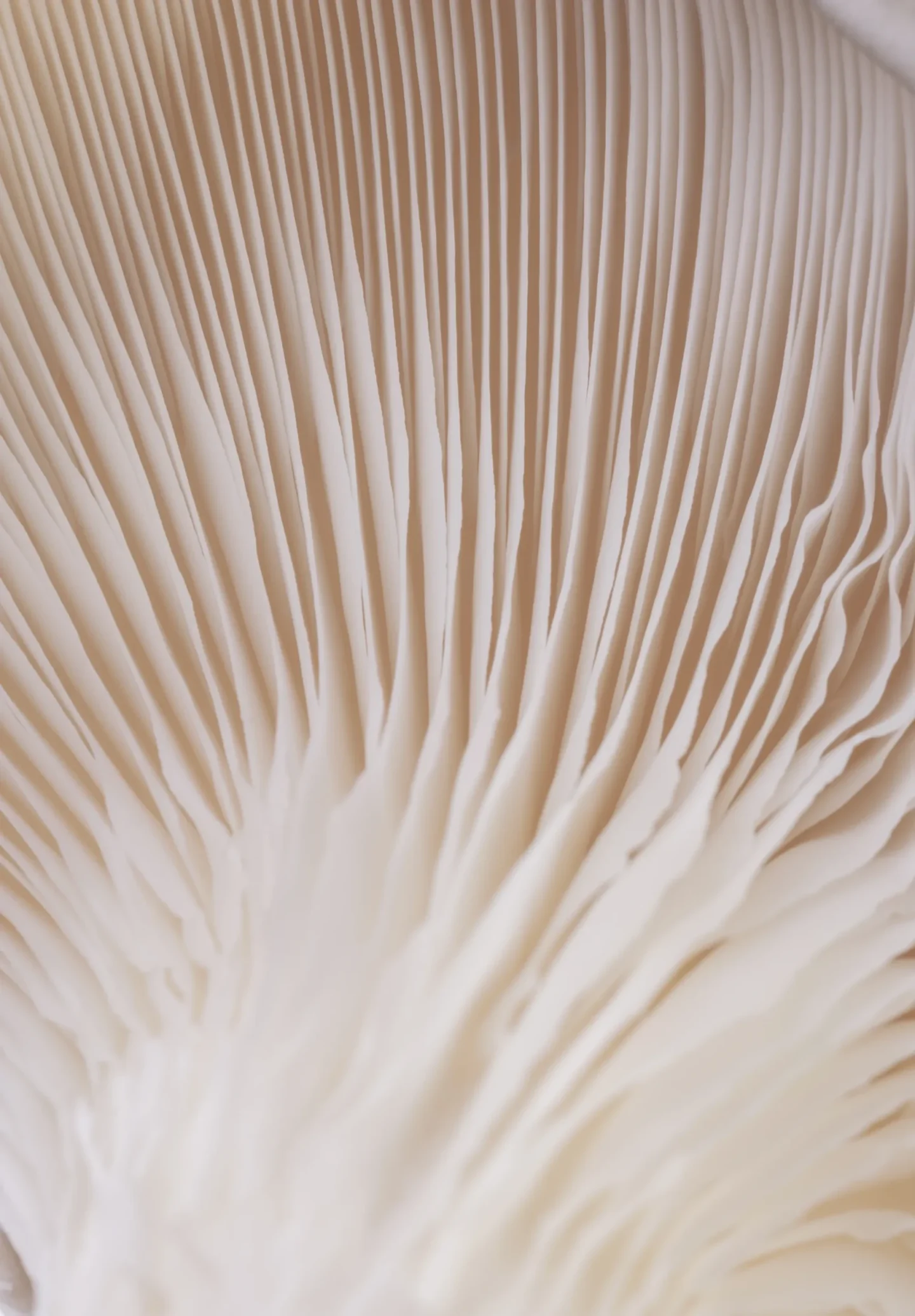
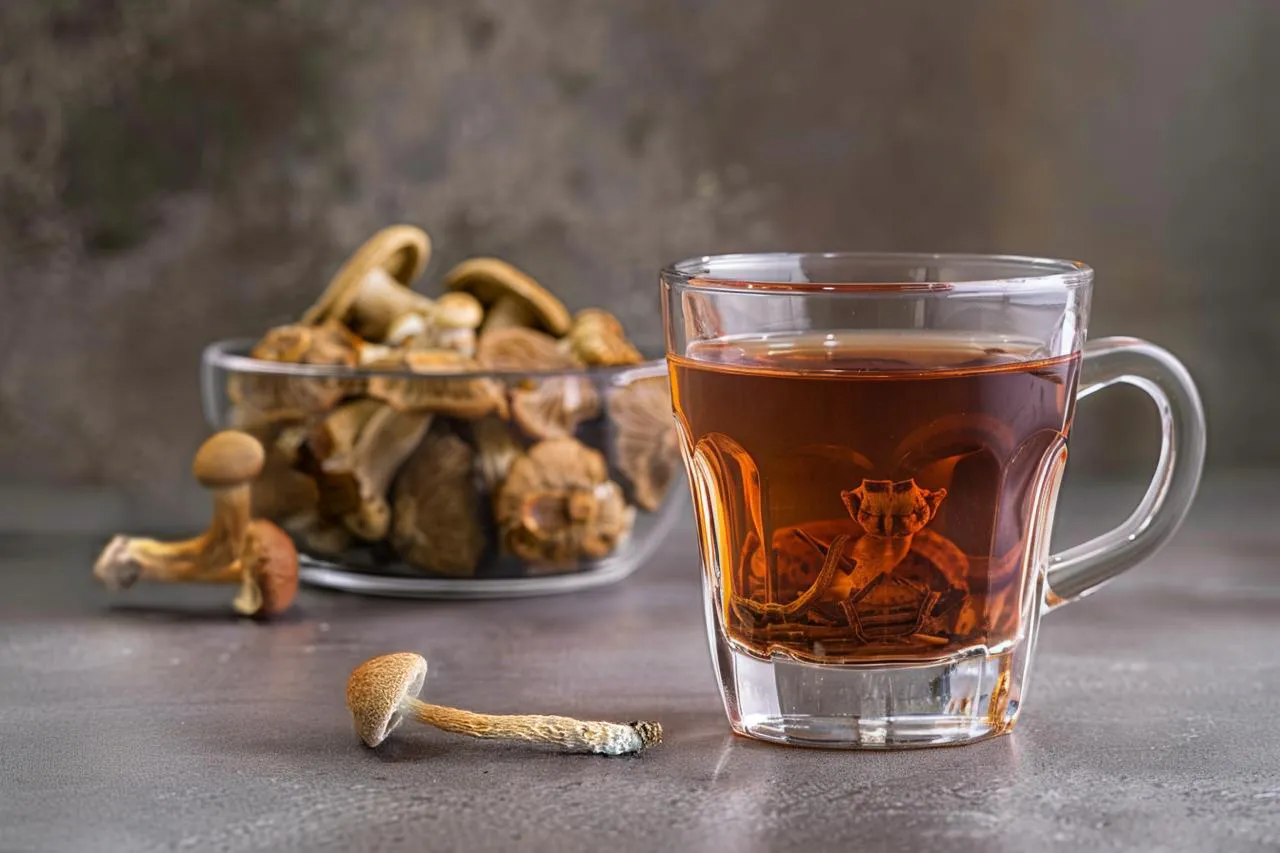
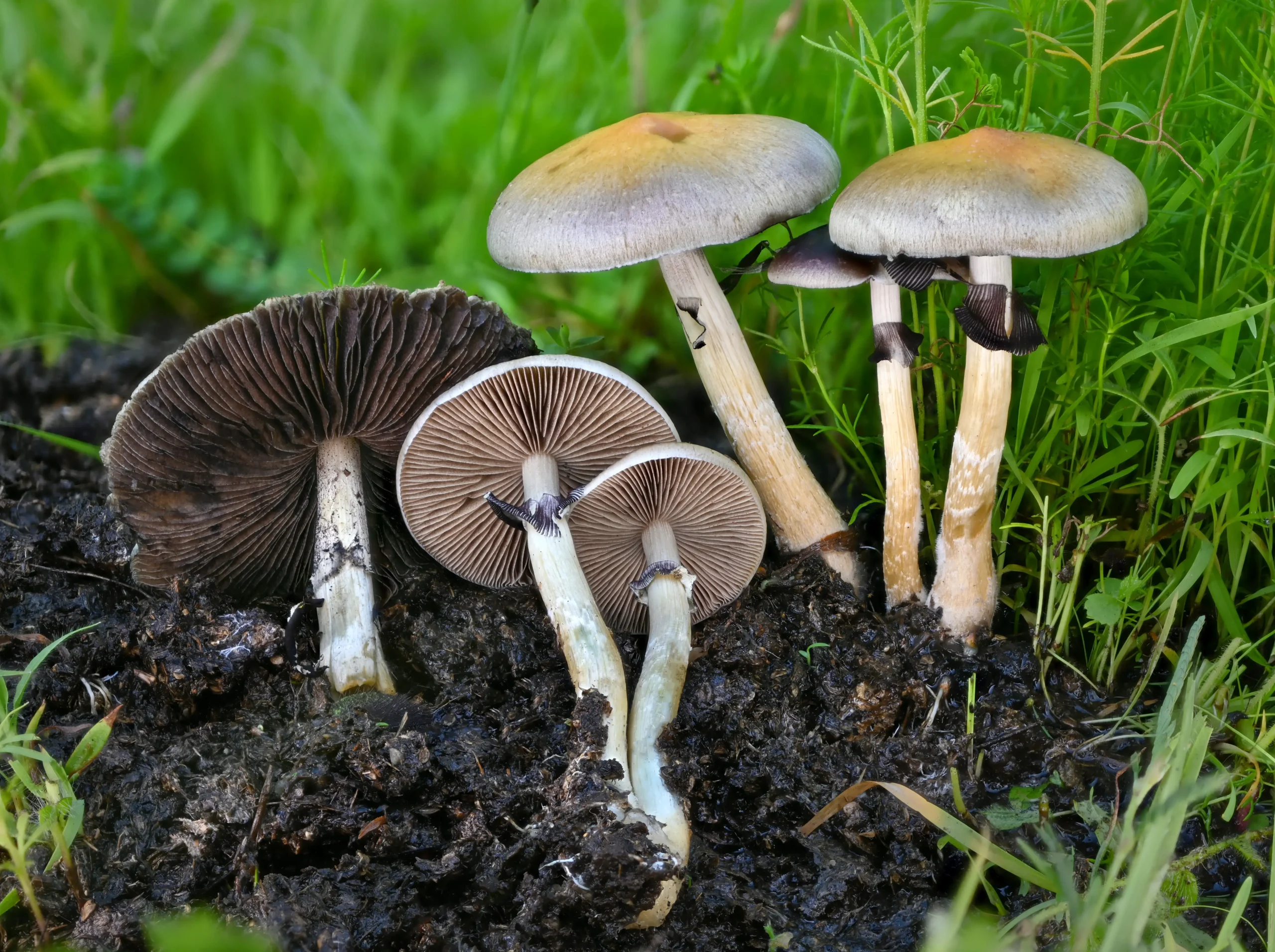
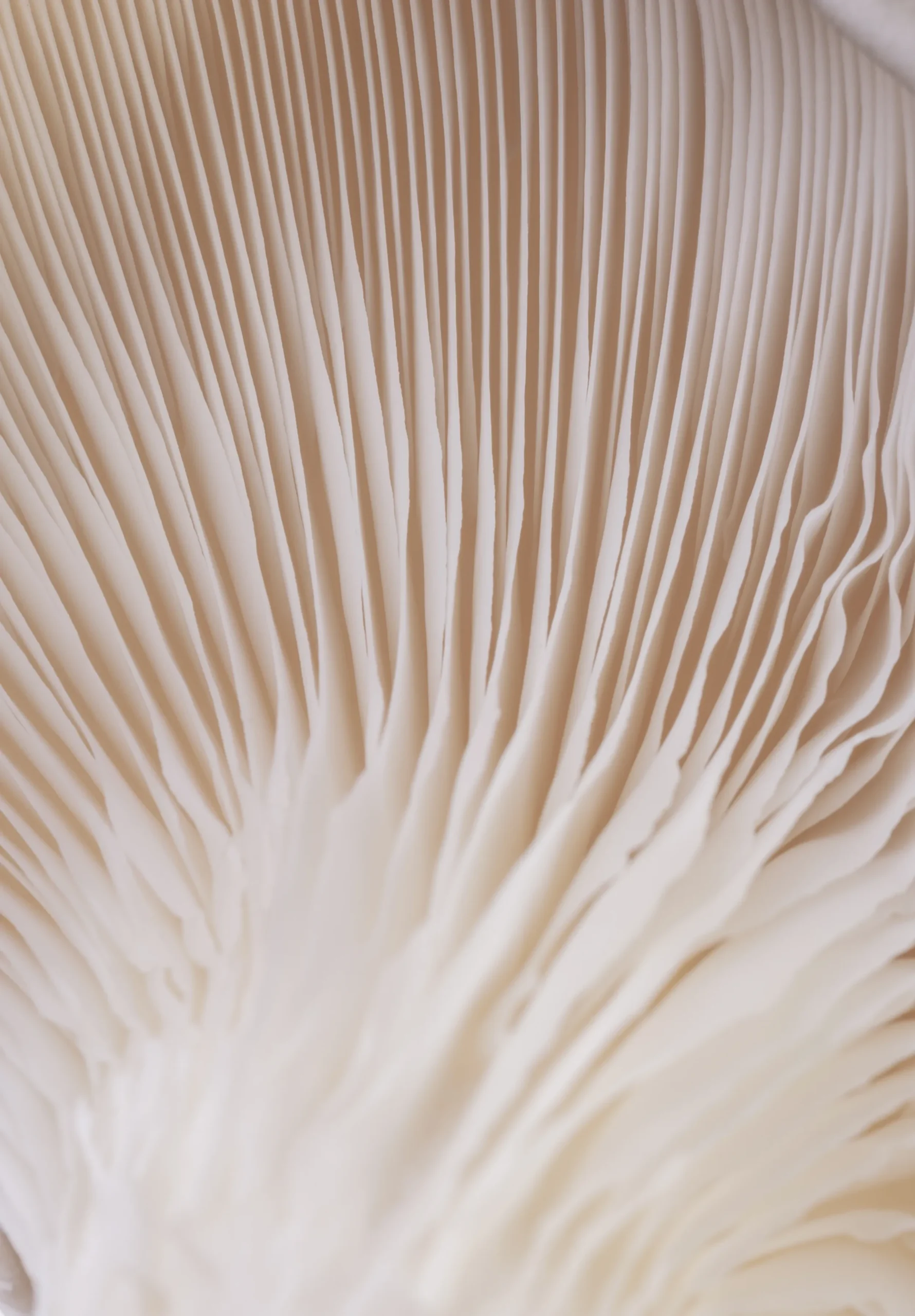
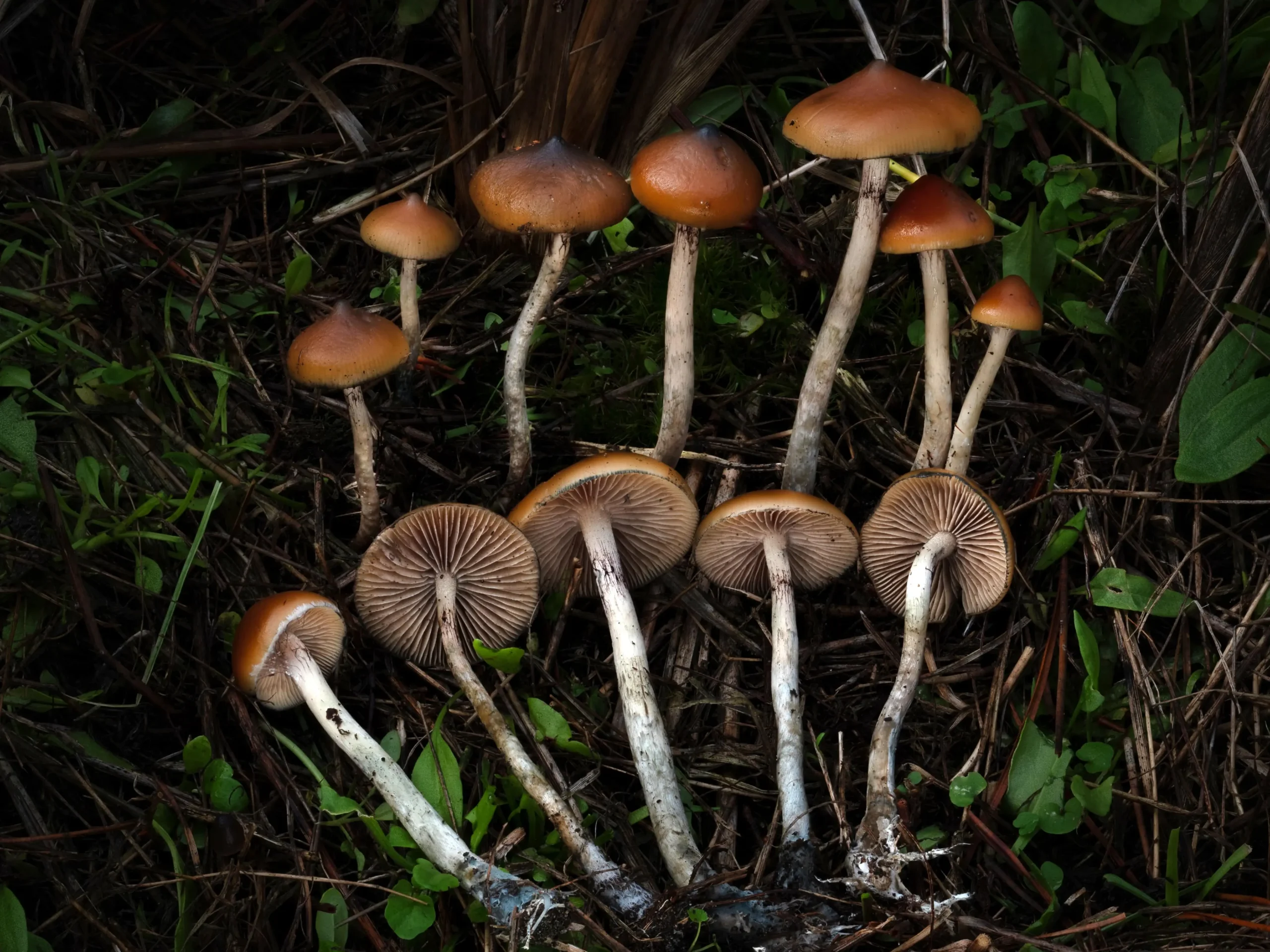


 David Connell
David Connell Psychedelics.com Team
Psychedelics.com Team James Conway
James Conway